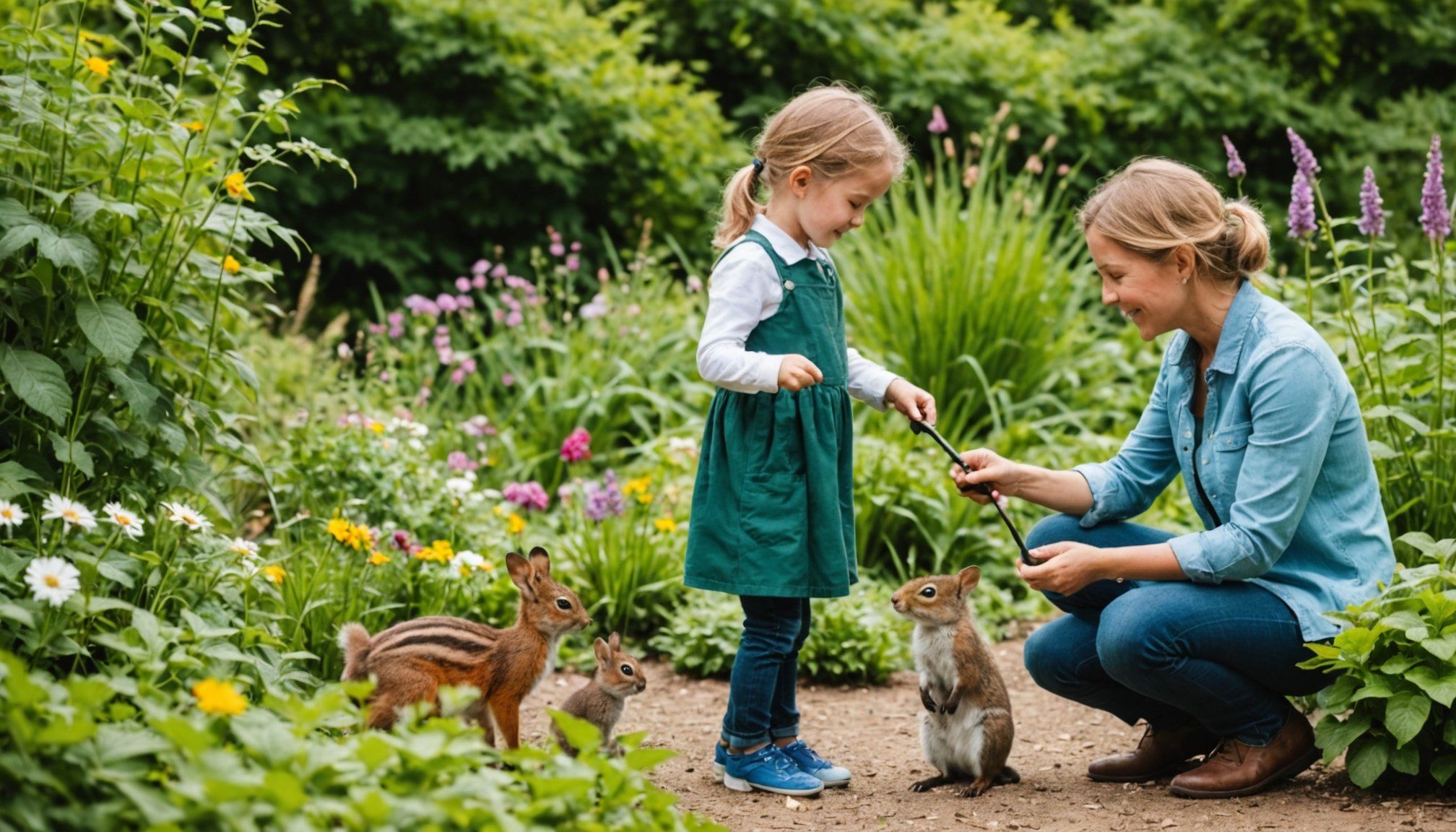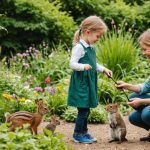Creating a family-friendly garden that attracts local wildlife is a rewarding endeavor that balances aesthetics, functionality, and ecology. In today’s urban environments, gardens serve as vital green spaces, offering a retreat for families while supporting biodiversity. By transforming your outdoor area into a haven for both humans and wildlife, you foster a deeper connection with nature, provide educational opportunities for children, and contribute to local conservation efforts. This article will guide you through the process of designing a wildlife-friendly garden, ensuring it is safe, engaging, and sustainable for the whole family.
Understanding the Concept of a Family-Friendly Garden
A family-friendly garden is more than a patch of grass adorned with flowers. It is a thoughtfully curated space that marries the needs of its human inhabitants with those of the local wildlife. When designing such a garden, consider integrating elements that offer functionality and enjoyment for families, while providing habitats and resources for wildlife.
In the same genre : How can I create a personalized gallery wall in my living room?
A successful family-friendly garden should be spacious enough to accommodate various activities, such as play, relaxation, and gardening. Zoning areas for different purposes can help manage these needs. For instance, designate a play area with soft grass for children, a quiet nook for reading or meditation, and a vegetable or flower garden for those with a green thumb.
Simultaneously, think about the wildlife you wish to attract. Birds, bees, butterflies, and small mammals are excellent candidates for a suburban setting. To invite them, incorporate resources such as water features, native plants, and nesting sites. A shallow birdbath or a small pond can become a hub of activity, providing hydration for birds and a breeding site for frogs. Native plants, on the other hand, supply food and shelter, ensuring survival for various species.
Topic to read : What are some innovative storage solutions for small apartments?
Overall, the essence of a family-friendly garden lies in its ability to harmonize human and ecological needs, transforming outdoor spaces into dynamic ecosystems that serve both purposes.
Choosing the Right Plants to Attract Wildlife
Selecting the appropriate plants is crucial when designing a garden that attracts local wildlife. Plants serve as the foundation of the garden’s ecosystem, offering food, shelter, and breeding sites for various creatures. Understanding the native flora of your region is the first step in creating a sustainable environment.
Native plants are inherently adapted to local soil and climate conditions, requiring minimal maintenance while supporting indigenous wildlife. They supply nectar, seeds, and fruits that cater to the dietary needs of birds, bees, butterflies, and small mammals. For instance, milkweed is a host plant for monarch butterflies; it is a vital component of a butterfly-friendly garden. Similarly, berry-producing shrubs like elderberries or serviceberries provide nourishment for birds.
In addition to native species, consider incorporating a diversity of plant structures. Layering different plant heights creates a multi-dimensional ecosystem, offering various niches for wildlife. Trees such as oaks or maples can shelter birds, while shrubs and wildflowers cater to smaller creatures.
Herbaceous borders and flower beds filled with species like lavender and coneflower attract pollinators, boosting biodiversity. Remember to include plants that bloom in different seasons, ensuring a consistent food supply year-round.
Finally, avoid using pesticides, as they can harm the very wildlife you seek to attract. Instead, opt for organic gardening practices that promote a healthy ecosystem.
By thoughtfully choosing plants that support local wildlife, you lay the groundwork for a thriving and visually pleasing garden.
Incorporating Wildlife-Friendly Features
Beyond selecting the right plants, incorporating specific features can enhance your garden’s appeal to wildlife. These features not only provide essential resources but also create a dynamic and interactive space for families to enjoy and learn from.
Water sources are one of the most critical elements. A simple birdbath can attract a variety of birds, while a small pond can become a focal point for amphibians and insects. Ensure water features are safe for children, with shallow edges and non-slip surfaces.
Nesting and shelter sites are also vital. Birdhouses, bat boxes, and insect hotels offer refuge and breeding spaces for wildlife. Strategically place these features to mimic natural environments, like a birdhouse nestled in a tree or an insect hotel in a sunny spot.
Creating a wildlife corridor with hedgerows or native grass borders helps animals move safely through the garden. These corridors connect different habitats, encouraging species diversity and supporting ecological balance.
Consider a compost heap as a dual-purpose feature—recycling household waste while providing a habitat for insects and small creatures.
Finally, incorporating a sensory garden with plants that stimulate sight, sound, smell, and touch can be an engaging educational tool for children. Use fragrant herbs, vibrant flowers, and rustling grasses to create a multi-sensory experience.
By thoughtfully integrating these features, you transform a regular garden into a vibrant ecosystem, enriching your family’s interaction with nature.
Ensuring Safety and Accessibility for All Family Members
When designing a family-friendly garden, safety and accessibility are paramount. The garden should be a welcoming space where all family members, regardless of age or mobility, can enjoy the beauty and tranquility it offers.
Start by ensuring pathways are wide, level, and well-maintained. Use non-slip materials like gravel or bark mulch to prevent accidents, especially in wet conditions. Consider the placement of garden furniture and outdoor play equipment, ensuring they do not obstruct movement or pose tripping hazards.
For families with young children, avoid toxic plants, sharp tools, or potentially dangerous features. Secure water features with covers or shallow edges, and use fencing to delineate safe play areas.
Enhance accessibility by incorporating raised beds or vertical planters, which allow easier gardening for those with mobility challenges. These features can also serve as educational tools, enabling children to explore gardening in a controlled and manageable space.
Lighting is another aspect to consider. Strategic lighting not only extends the usability of the garden into the evening but also enhances safety. Solar-powered lights are an eco-friendly option that provides illumination without increasing energy costs.
Ultimately, the goal is to create a garden that is inclusive and enjoyable for everyone, providing a safe and stimulating environment that fosters a love for nature.
Creating a family-friendly garden that attracts local wildlife is a fulfilling journey that blends nature and nurture, offering numerous benefits to both your family and the environment. By understanding the needs of wildlife, choosing the right plants, incorporating wildlife-friendly features, and ensuring safety and accessibility, you can design a garden that serves as a sanctuary for all.
Such a garden not only enhances the aesthetic appeal of your home but also nurtures a rich tapestry of life, fostering a deeper connection with the natural world. As you embark on this transformative project, remember that every small effort contributes to a larger environmental impact, promoting biodiversity and sustainability for future generations.











